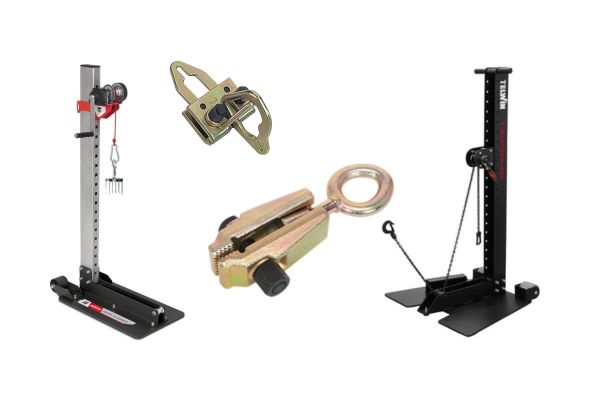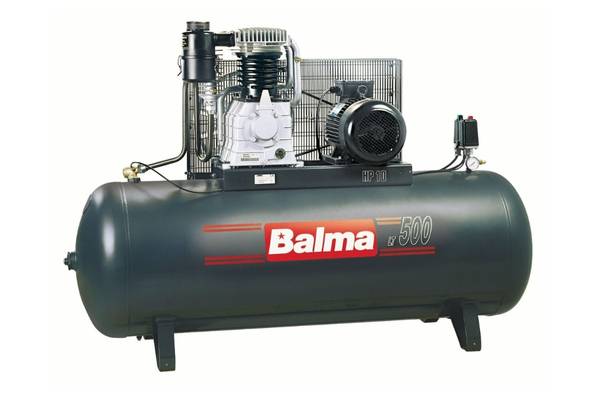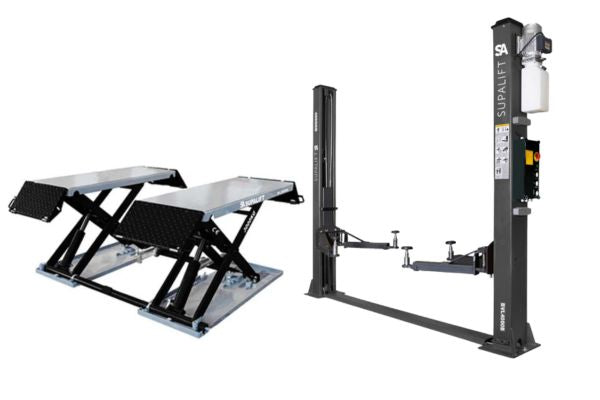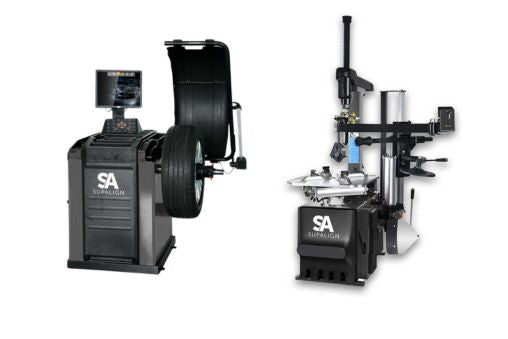Need Some Help? 0161 223 1843
Need Some Help? 0161 223 1843
BODYSHOP
WORKSHOP
WELDING
TOOLS
SAFETY

Why not using a fume extractor when welding, is dangerous
September 04, 2020 4 min read
Welding Fume has always been known to be hazardous or at the very least an irritant, but now there is new evidence that even the lowest form of welding on mild steel can cause cancer,
Welders generally are a hardy breed and tend to not think of welding fume as a hazard, but it begs the question, why?

You will never see a welder without a welding helmet; most have had the dreaded "arc eye" to learn that pretty quickly. The same could be said with "ray burn." That beautiful glowing skin you get when welding without covering your skin.
I once knew a young lad who was welding a chassis leg on a car, and so he was squeezed into space where the engine would normally sit. He was welding without a helmet on and kept turning his head to one side every time he arced up. He was surprised at us laughing at his face the next morning as he had burnt it on only one side! The lesson was learned, though, and he never welded again without a helmet or glove protection. But what about fumes?
Modern vehicle steels are well protected nowadays what with the electroplated zinc and galvanizing layers applied. The fumes are given off though look light but are extremely hazardous.
METAL FEVER
Galvanizing, when vaporized during welding, produces a noxious substance called zinc oxide. Acute exposure of this can cause flu-like symptoms called "metal fever" symptoms include fever, chills, thirst, and headaches. The effects typically begin up to 4 hours after exposure and can last for as much as 48 hours.
Continued exposure to these levels can cause Cancer and lead to death, its that serious. Read our blog on WHY HAVE WELDING FUMES BEEN RECLASSIFIED AS A HUMAN CARCINOGEN?
Stainless steel welding is the most linked to cancer, as stainless-steel fume contains elevated levels of harmful nickel oxide and chromium oxide and in even low levels these are found to be carcinogenic.
OZONE
Ozone is a tiny molecule which is composed of three oxygen atoms. It is highly reactive which makes it an unstable and potentially toxic gas.
TIG welding produces a lot of Ozone and long exposure especially when TIG welding aluminium and stainless steels, can cause fluid on the lungs. Ozone can be removed though using HEPA filters and so we would recommend your PAPR system has these.
A WELDERS PROBLEM
According to research, many welders can die each year from lung infections that lead to pneumonia or asthma. Fume protection would help to vastly reduce this.
New legislation introduced in February 2019 now mandates the wearing of fume protection helmets, and although some companies have been quick to implement this, many are still oblivious. HSE planned flash inspections, but this has been reduced due to the pandemic, but the HSE is checking, and it will eventually happen.
Protecting yourself need not be expensive, though, PAPR respiratory systems can be had for a few pounds. As a minimum, you need to wear FFP2 grade which comes with an exhalation valve. They can be found in normal or carbon models. you can find some HERE
TIG WELDING
These masks for a hobbyist are acceptable but not for professionals. The masks require fitting and don't seal correctly if you haven't shaved for 9 hours. They, therefore, don't protect you correctly in a professional environment. They can also cause your welding helmet lens to steam up when welding, which isn't good!
For professionals, a fume protection welding helmet or PARP is required. These vary from a few hundred pounds to over a thousand. They all essentially do the same thing, that is filter the air around you by pulling it through a set of filters and transfer this clean air via a tube to your welding helmet.
This blowing of clean air creates a positive pressure effect inside your helmet, ensuring no fumes can get in. It will also stop for lens steaming up ( see above).

There is an excellent variety of these fume protection helmets, so I would recommend the following when looking for one suitable.
- Ensure the helmet lens is True Colour.
- Check prices of the replacement filters.
- Wear it, check it's comfortable and not too top-heavy.
- Is it suitable, filter wise for your welding application? Do you really need shade seven and grind function?
- Don't think more expensive means better. A thousand-pound helmet can be wasted on a hobby welder.
- Ensure it meets European standard EN12941: 1998/A 1:2004/A2:2008 TH3P
We at BWS like to think we have a fantastic variation of welding helmets for every application and budget. Our engineers personally use some of these helmets in their day to day jobs so can give you honest advice on the suitability for you.
MOBILE FUME EXTRACTION
There is not only a requirement for personal protection but the workplace as well; This can be in the form of mobile units or fixed.
By far, the most popular option for body shops is the mobile fume extraction units, and these are available in two configurations, mini and maxi? The mini and maxi units both feature a filter box and trunk that is placed near to where the fumes are generated. The difference between the two is the size of the trunk and funnel and the airflow rate.
Welding fumes are heavy particles, so the trunk or funnel needs to be placed directly above the source to be effective and remove most of the fumes. Therefore this makes it difficult to position when working on vehicles as you need to move the funnel and trunk every time. This means they can be very impractical in the work environment, and technicians will very quickly stop using them.
The larger units also tend to be a problem fitting between vehicles and welding bays. It’s because of these problems that I would recommend to Bodyshops to stick to the minis and leave the maxi alone.
The one great thing about the Protectovac, as shown above, is the fact that it can be used as an auto stop-start. Simply run your welder's earth cable under a little clip at the top of the unit, and now every time you arc up, the extractor will start.
WE have some fantastic deals with up to 20% off some of our Mobile Fume Equipment
Use the code 2375JXTVAPAY. at the Checkout
Acknowledgements
Arc eye picture from funnyjunk
Leave a comment
Comments will be approved before showing up.



















































